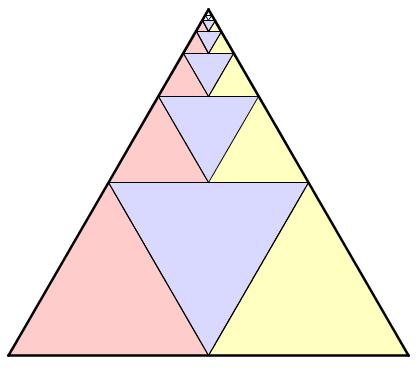 Richard Geller, a longtime math teacher and math team coach at Stuyvesant High School, recently passed away. I only knew Richard professionally, but it was easy to see that he was a good man and a good teacher. His dedication to his students, his school, and the math team was always apparent.
Richard Geller, a longtime math teacher and math team coach at Stuyvesant High School, recently passed away. I only knew Richard professionally, but it was easy to see that he was a good man and a good teacher. His dedication to his students, his school, and the math team was always apparent.
At a math circle one evening, Richard shared with me a lovely solution to a challenging problem that I’ll never forget. I share it here as a tribute to him.
There are lots of famous concurrencies in triangles. The medians of a triangle all intersect at the centroid; the angle bisectors at the incenter; and the perpendicular bisectors at the circumcenter. We say that each set of lines is concurrent.
A less intuitive concurrency is that of a triangle’s altitudes, which all intersect at the triangle’s orthocenter. It’s harder to see because you often have to rethink your notion of altitude to see them intersect.
 Not only is it harder to see the concurrency of the altitudes, but it’s harder to prove it as well. There are many well-known methods, like using Ceva’s Theorem or areas, but they are rather complicated. To me, the orthocenter was never as accessible as the circumcenter, incenter, or centroid. Until Richard showed me this proof.
Not only is it harder to see the concurrency of the altitudes, but it’s harder to prove it as well. There are many well-known methods, like using Ceva’s Theorem or areas, but they are rather complicated. To me, the orthocenter was never as accessible as the circumcenter, incenter, or centroid. Until Richard showed me this proof.
Start with an ordinary triangle. We want to show that the altitudes of this triangle all intersect at a single point.
 First, we create a new triangle by rotating three copies of our original around the midpoints of each side. What we are doing is creating a new triangle whose medial triangle is our original triangle.
First, we create a new triangle by rotating three copies of our original around the midpoints of each side. What we are doing is creating a new triangle whose medial triangle is our original triangle.
 Now the magic: construct the perpendicular bisectors of the new triangle.
Now the magic: construct the perpendicular bisectors of the new triangle.
 The amazing fact here is that the perpendicular bisectors of the new triangle are the altitudes of the original triangle! As long as we know that the perpendicular bisectors of any triangle are concurrent (which is fairly easy to prove), we know that the altitudes of any triangle are concurrent, too!
The amazing fact here is that the perpendicular bisectors of the new triangle are the altitudes of the original triangle! As long as we know that the perpendicular bisectors of any triangle are concurrent (which is fairly easy to prove), we know that the altitudes of any triangle are concurrent, too!
Richard didn’t invent this theorem or this proof, but he taught it to me, and for that I’ll be forever grateful. When I share it with students, I think of him. And from now on, when I show students the Geller Technique, I’ll wrap it up with one of Richard’s favorite phrases: Math is #1!







